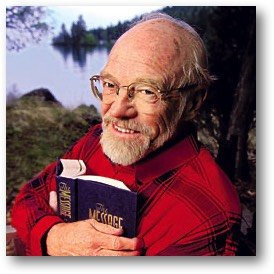Peterson: Prayer
“I began to comprehend the obvious: that the central and shaping language of the church’s life has always been its prayer language. Out of that recognition, a conviction grew: that my primary educational task as pastor was to teach people to pray.”—Eugene Peterson, “What Is My Educational Task?” in The Contemplative Pastor: Returning to the Art of Spiritual Direction (Eerdmans, 1993).
The well-known author of the popular modern Bible translation, The Message, reveals that his interpretation of the most important ministry of a pastor is being a spiritual director, teaching others how to pray. Of course, he is not downgrading teaching about faith, biblical writings, or the history of God’s people. Still, he calls pastors to be spiritual directors, returning to the wisdom of ancient spiritual leaders who trained people to connect to God and God’s love through various forms of prayer.
Peterson introduces us to making friends with our ancient forebears, beginning with Gregory of Nyssa and Teresa of Avila. Then, he challenges us to learn the language of intimacy, love, and relationship.
He reminds us of two great mystical prayer traditions, the kataphatic and the apophatic, one praying with our eyes open, the second praying with our eyes shut. Kataphatic prayer turns to icons, symbols, rituals, and incense, affirming the gifts of creation as a way to the Creator. Apophatic prayer calls for emptiness—a mind cleared of thoughts and images until one experiences the silence and nearness of God. The two ways of prayer can be mixed, and we will find one or the other more meaningful at different times in our lives.
However, this former professor of spiritual theology reminds us that the Psalms were written by people of God with their eyes open.

